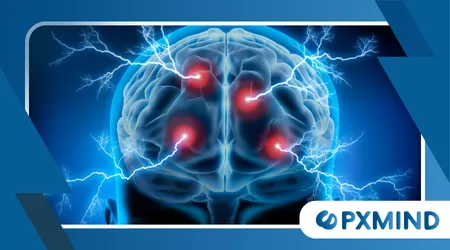How the Brain Handles Change and Uncertainty

How the Brain Handles Change and Uncertainty. The human experience is fundamentally defined by flux, yet our most complex organ, the brain, exhibits a profound, almost contradictory, aversion to the unknown.
Anúncios
This intrinsic tension between a dynamic world and a prediction-seeking mind underpins much of our stress and anxiety.
The journey from a predictable state to an ambiguous future is a fascinating and demanding neural trek.
The brain’s primary directive is survival, a goal best achieved through accurate prediction and efficient resource allocation.
Unexpected shifts—whether personal, professional, or global—disrupt this finely tuned predictive mechanism. This interruption forces the system into a high-alert, energy-intensive mode.
The Amygdala’s Alarm and the Prefrontal Cortex’s Mediation
When faced with ambiguity, the brain’s ancient warning system, the amygdala, instantly springs into action.
It doesn’t need a definitive threat; the lack of certainty is enough to trigger a fear response. This immediate, reflexive reaction is a primal defense against potential danger.
However, the modern brain is not solely a creature of reflex. The prefrontal cortex (PFC), the seat of executive function, steps in to assess the situation and modulate this initial panic.
It works to generate contingency plans and reframe the unknown, essentially converting fear into a challenge.
The Cost of Cognitive Dissonance How the Brain Handles Change and Uncertainty
The continuous processing of ambiguity exacts a significant cognitive load.
The brain expends considerable energy attempting to bridge the gap between “what is” and “what might be,” a process known as predictive coding.
When predictions fail repeatedly, the system can enter a state of fatigue.
Consider the ongoing challenge of adapting to rapidly evolving workplace technologies.
Read more: How Neuroinflammation Contributes to Alzheimer’s & Parkinson’s
A mid-career professional must constantly update skills, knowing that the next disruptive innovation is likely just around the corner.
This ceaseless requirement for “learning-on-the-fly” is a direct drain on the PFC’s capacity, often leading to decision fatigue.
Neuroplasticity: The Brain’s Adaptive Superpower
The good news is that the brain is not a static machine; it is fundamentally designed for adaptation.
Neuroplasticity, the ability to reorganize neural pathways, is our ultimate mechanism for coping with a changing world.
It permits the formation of new circuits to encode novel behaviors and knowledge.
Research from institutions like the University of California, Berkeley, highlights how focused attention and repeated engagement with new stimuli are key drivers of structural and functional change.
This means that exposure to controlled novelty can actually strengthen the neural pathways associated with resilience.

Dopamine’s Role in Motivating the Leap of Faith
While uncertainty is initially stressful, the brain has an internal reward mechanism to encourage exploration.
The neurotransmitter dopamine is often associated with pleasure, but it primarily drives motivation by signaling the salience of a potential reward.
Read here: How the Brain Builds (and Breaks) Habits
When we successfully navigate an uncertain situation, or even take an informed risk, a surge of dopamine reinforces that behavior, transforming what was once a source of anxiety into a learned opportunity for growth.
This is the neural basis for turning risk aversion into calculated exploration.
Uncertainty Tolerance: A Modifiable Trait
The way an individual experiences ambiguity is not fixed; it falls along a continuum known as Uncertainty Tolerance.
Individuals with lower tolerance often experience the world as more threatening, requiring more effort for their PFC to quell the amygdala’s alarm.
But this tolerance can be nurtured. By deliberately exposing oneself to small, manageable doses of the unknown, the brain gradually habituates, recalibrating its danger signal.
It’s like a neural calibration where the PFC learns to override the default “panic” setting.
++ How to Cope with Stress Without Burning Out
As an example: Imagine an established small business owner who, for two decades, relied solely on brick-and-mortar sales.
The sudden shift to e-commerce (the uncertainty) forces a massive cognitive restructuring.
The initial fear is significant, but each successful online transaction reinforces the new neural pathway, slowly elevating their tolerance for digital-age ambiguity.
This illustrates How the Brain Handles Change and Uncertainty in a practical, real-world scenario.
Statistical Insight into Our Predictive Reliance
Our neural reliance on prediction is quantifiable. A 2021 review published in the journal Nature Communications examined predictive coding and showed that the brain continuously minimizes prediction errors.
This process suggests that nearly 80% of cortical activity is devoted to processing and integrating external sensory input with internal models to anticipate future events.
When the environment throws up a completely novel event, the prediction error spikes, necessitating the full engagement of adaptive mechanisms.
| Brain Region | Primary Function in Change/Uncertainty | Output |
| Amygdala | Initial threat detection; emotional tagging. | Fear/Anxiety Signal |
| Prefrontal Cortex (PFC) | Executive planning; risk assessment; regulation. | Calm/Strategy |
| Hippocampus | Memory formation; contextual mapping. | Learning/New Context |

The Brain as a Dynamic Navigation System
Consider the brain as a sophisticated Global Positioning System (GPS). In a known city, the GPS simply provides clear, turn-by-turn directions (certainty).
But when an unexpected road closure occurs, the system immediately starts recalculating (uncertainty).
This recalculation demands significant processing power—it’s not just finding a new route, it’s assessing all potential routes simultaneously until a new optimal path emerges.
That intense computational effort mirrors the brain’s engagement with How the Brain Handles Change and Uncertainty.
Ultimately, embracing flexibility is not just a psychological virtue; it is a neurobiological imperative. We are not designed to live without risk, but to master its management.
Given the unprecedented pace of technological and societal evolution, can we afford not to actively train our brains for the ambiguous landscapes ahead?
The ability to pivot is, quite literally, a hallmark of a healthy, adaptive mind, perfectly illustrating How the Brain Handles Change and Uncertainty.
Mastering the Pivot How the Brain Handles Change and Uncertainty
The brain views change and uncertainty not as existential threats, but as massive, albeit challenging, information problems that require creative solutions.
By understanding the interplay between our primal fear response (amygdala) and our rational planning center (PFC), we can intentionally strengthen our capacity for resilience.
The mastery of How the Brain Handles Change and Uncertainty is not about eliminating the unknown, but about transforming our neural response to it, moving from dread to proactive engagement.
Frequently Asked Questions
What is the primary cause of stress during uncertain times?
The primary cause of stress is the brain’s attempt to reconcile a lack of external data with its internal need for an accurate predictive model of the future.
The gap between what the brain knows and what it needs to know generates a persistent “prediction error” signal, which is neurochemically expressed as anxiety.
Does excessive screen time affect the brain’s ability to handle uncertainty?
Yes, excessive consumption of fast-paced, often alarmist, digital content can create a state of chronic low-level alert.
This overstimulates the amygdala and can potentially fatigue the prefrontal cortex, reducing an individual’s natural capacity to calmly process novel or ambiguous real-world situations.
Can meditation genuinely improve uncertainty tolerance?
Absolutely. Practices like mindfulness meditation are shown to strengthen the connection between the Prefrontal Cortex and the Amygdala.
This enhanced connectivity allows the PFC to exert greater control, essentially dampening the immediate emotional reaction to uncertainty and promoting a more reasoned assessment of the situation.
